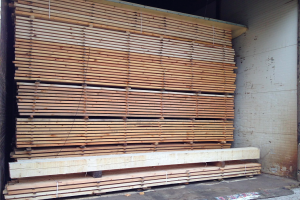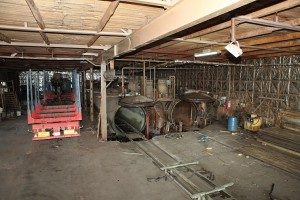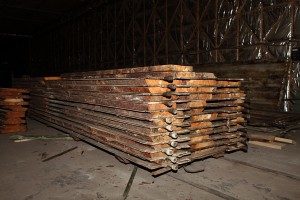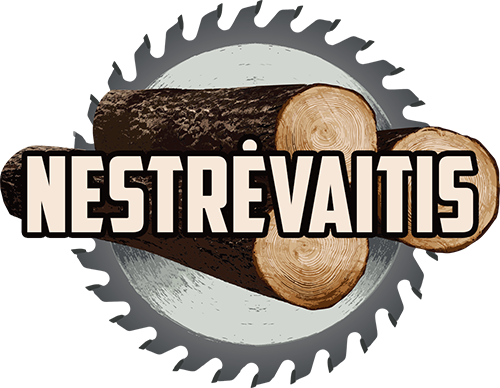Wood drying
Freshly harvested or cut wood is only raw material, that becomes valuable construction material only when most of the dampness is removed from it, i.e. after drying it. Wood has to be dried until so-called equilibrium dampness, compatible with its maintaining conditions.
27 years of experience
High quality production
All kinds of wood for construction
Lithuanian timber logs
These conditions are described by air parameters (temperature and relative humidity), therefore humidity to which the wood has to be dried, depends on the purpose of the wood: wood used to make furniture has to be dried up to 7-8% humidity, wood used for construction materials up to 18-20% and so on.
Products and constructions, made out of non-dried or poorly dried wood are inferior, because while maintaining it in dry environment it changes its measurements, their joints crack, and in humid environment wood can be attacked by coloring mold, and later on by wood-destroying fungi. Fungus proliferates in wood, when woods temperature is between -50°C and +50°C, and its dampness is higher than 22-23%. Therefore, from a long time ago construction wood used to be dried: from the oldest times only by natural atmospheric way, later on atmospheric and artificial way – in special drying rooms at natural and then forced air circulation.
Wood drying
 Convectional drying is a process, when by heat treatment humidity is evaporated from a material, and when the steam is removed. When material is drying moisture diffuses from the inner layers to the surface and then evaporates to the environment. During convective drying material is dried in warm air or smoke flow. Drying agent transfers part of its heat to the material and removes evaporated water steam from it. Drying by this method, for drying agent, heated in the heater or fireplace, additional heat is supplied in work chamber.
Convectional drying is a process, when by heat treatment humidity is evaporated from a material, and when the steam is removed. When material is drying moisture diffuses from the inner layers to the surface and then evaporates to the environment. During convective drying material is dried in warm air or smoke flow. Drying agent transfers part of its heat to the material and removes evaporated water steam from it. Drying by this method, for drying agent, heated in the heater or fireplace, additional heat is supplied in work chamber.
Vacuum drying
Wood drying in a vacuum stove begins as described below:
1. Wooden planks are placed on the plate (radiator) which is already laid down on a trolley. Placed planks are covered by another, already mentioned, plate, when another row of planks and plate are placed on top, the cart is loaded this way to permitted height to fit into autoclave
2. Trolley are pushed into mentioned autoclave.
3. Electrodes are drilled into a plank to control humidity.
4. Plates are linked with fast connections, which will be used to feed the plates with hot water.
5. Autoclave is closed.
6. With the help of vacuum pump air is sucked out until 0,8 bar.
7. Drying started. Drying time depends on the thickness of the planks and on the type of wood.


Years in business
Employees
Happy customers
Wood production and impregnation
Planks
You can always purchase properly packaged and ready to be transported fir or pinewood planks: Single cut planks. Double cut planks. Interior paneling planks. Exterior paneling planks. Floor planks. Terrace planks
Balk
We will cut out our production exactly by Your measurements, regardless of what dimensions you need.
Timber for roofs
Roof – one of the most important structural and architectural part of the building. Its main purpose – to protect the structure from atmospheric precipitation, sun, changes in the temperature, wind and noise.
Message Us
Get In touch below. Ask Any Question or Start a Free Quote
Call Us
Office Location
Aukštadvario g. 7, Trakai.
Open Hours
Man. - Fri.: 08.00 - 17.00
